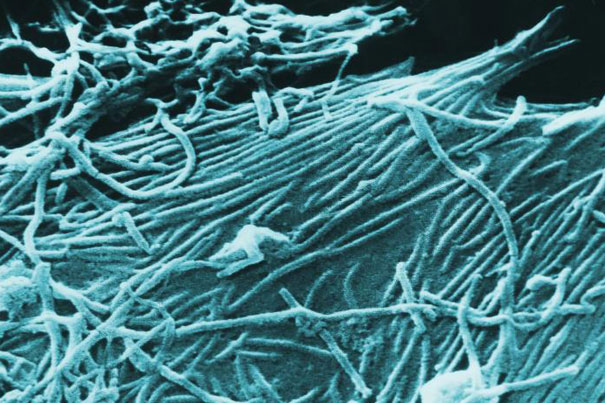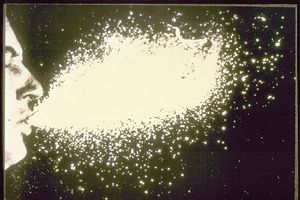The Power of Pandemics - The truth behind contagion
Interview with
Ian - The most important advance in the past few years has been the international health regulations to which all of the major countries that have represented the UN have signed up to. The International Health Regulations' mandate is not only their requirement for improving health surveillance in your own country, but also supporting the improvements in the developing world as well. So, this means that assuming that we follow this through to it's logical conclusion, we will have high quality surveillance all over the world and that people will report in a timely fashion. There are a number of assumptions there of course and one is that there are resources are available to enable this and that's not clear right now and it's become obviously more difficult with the global economic crisis. But nonetheless, there is a firm commitment on the part of the major industrialised nations to make certain that this does come into place.
Sarah - I suppose it'll be a combination of observing at internal, nation wide,  levels, but also working between countries at an international level to keep an eye on things and track the movement of such a pandemic.
levels, but also working between countries at an international level to keep an eye on things and track the movement of such a pandemic.
Ian - That's correct and of course, one of the things that we would like to do would be to prevent or interdict the pandemic by recognising the potential before something moves from animals into the human population. Fully three quarters of emerging infectious diseases originate in wildlife and then either move through domestic animals into people or move into people directly, and there are many examples of these - HIV, SARS, influenza virus, West Nile virus. So one of the things we're trying to do is to extend surveillance from the human community and to the animal community. So there are a number of efforts that have been allowed in the UK, and probably the most support has been found from the Wellcome Trust. In the United States, it's USAID and all these groups are collaborating and trying to support one another in these efforts to identify potential pathogens of humans and animals. Sometimes we focus on gorillas and chimpanzees because we're thinking about the HIV, and so on but over the past four or five years, people are focused on bats. Bats appear to be tolerant to infection with many of these exotic and highly virulent viruses. So examples rabies, and SARS, and Ebola, and Marburg. And the bats don't seem themselves to be affected by most of these pathogens. They seem to be able to coexist with them quite happily until somebody eats some of these bats or there is some sort of transfer of infectious material from a bat to a human.
Sarah - And so, once we know more about the potential for animals like bats and other vectors to carry these infections and pass them on, what can we do with that information?
 Ian - There are several things. First of course, you can monitor wildlife for the presence of these infectious agents. They're not all infected and they're not always infected. And by tracking the movement of these infectious agents in wildlife, you can understand the risk that might be associated with humans. In addition, you can develop specific measures to address these, so people are trying to develop vaccines against many of these agents. There can be drugs which can be developed and once you know that a particular agent has a potential to move into humans, it becomes a much larger risk and you're able to focus investment of resources. I'm trying to address those risks. One of the things that we've been trying to do as a field in public health is to try to find ways in which we can streamline the process for creating vaccines for new infectious disease threats. When the pandemic H1N1 influenza virus surfaced in the Americas a couple of years ago, it took us fully 6 months to develop a vaccine, to validate it, to be sure that it was safe and efficacious, and then to begin to distribute it. And using modern molecular techniques, we have the capacity to make many vaccines more rapidly from that and we're trying to find ways in which the regulatory science can be brought up to speed. By regulatory science, I mean the ways in which it will ensure that a vaccine or a drug, or an antibody, or any of the sort of biological intervention is safe and effective. We need to find ways which we can streamline that process and also of course, make it less expensive.
Ian - There are several things. First of course, you can monitor wildlife for the presence of these infectious agents. They're not all infected and they're not always infected. And by tracking the movement of these infectious agents in wildlife, you can understand the risk that might be associated with humans. In addition, you can develop specific measures to address these, so people are trying to develop vaccines against many of these agents. There can be drugs which can be developed and once you know that a particular agent has a potential to move into humans, it becomes a much larger risk and you're able to focus investment of resources. I'm trying to address those risks. One of the things that we've been trying to do as a field in public health is to try to find ways in which we can streamline the process for creating vaccines for new infectious disease threats. When the pandemic H1N1 influenza virus surfaced in the Americas a couple of years ago, it took us fully 6 months to develop a vaccine, to validate it, to be sure that it was safe and efficacious, and then to begin to distribute it. And using modern molecular techniques, we have the capacity to make many vaccines more rapidly from that and we're trying to find ways in which the regulatory science can be brought up to speed. By regulatory science, I mean the ways in which it will ensure that a vaccine or a drug, or an antibody, or any of the sort of biological intervention is safe and effective. We need to find ways which we can streamline that process and also of course, make it less expensive.
Sarah - So it seems like there's an awful lot of sides to addressing obviously something that is extremely problematic. There's modelling, looking at potential vectors, there's the sequencing of new viruses that come up. When you were approached to do the film, were you really keen to make sure that it addressed the different sides of a potential pandemic?
Ian - Well to be honest, the most important thing was to figure out whether or not these guys were sincere about making a great film. The screenwriter approached me initially, Scott Z. Burns was a very serious guy and he said, "Look, I want to make something that's real. I want to make something that's important. Obviously, we need to fill theatres, but when we're done with this, we want to feel as though we've made a contribution." So we ran through a series of different scenarios - which viruses were of interest, where might a virus originate, how would it spread, and you know - I got sucked in quite frankly because it was a lot of fun thinking about the ways in which we might be able to convey this message.
I think they did a very good job. I mean, there are a couple of points where I think things might have been done a little bit differently, but by and large, the film is accurate and it's timely, and it has had an impact. Not least in its drawn attention to the people who do this kind of work day in and day out. Many who don't receive much in a way of accolades for the work that they do. Some of them die in the course of doing this work, but we try to emphasize the fact that everyone is at risk. You can't hide from infectious diseases and it's important that everyone be protected. I'm very proud of the film and it was a great deal of fun to make, I have to say. I didn't anticipate it was going to be as much fun as it was.









Comments
Add a comment